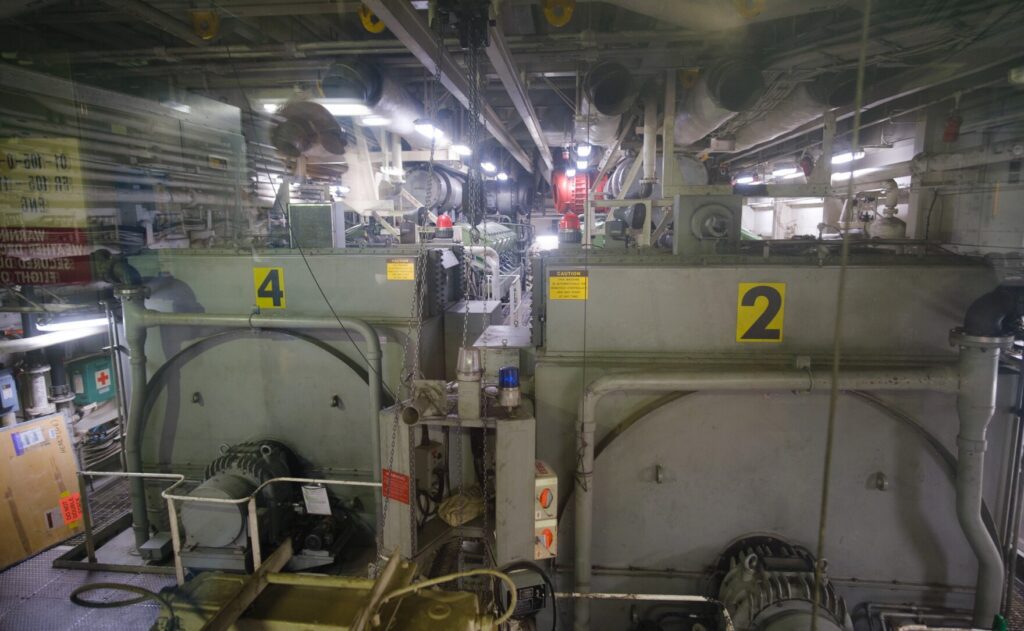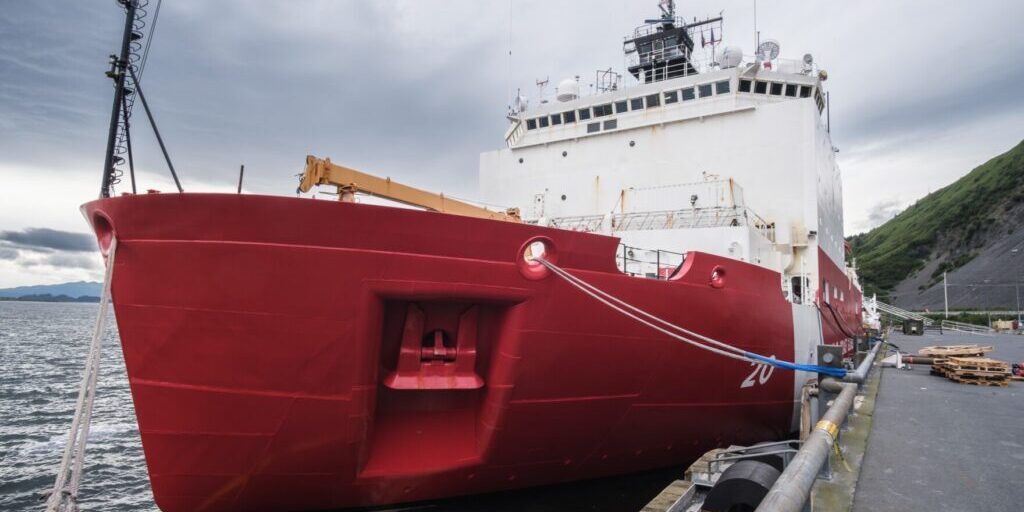The U.S. Coast Guard Cutter Healy, one of the nation’s two operational icebreakers, has been forced to cancel an Arctic mission due to mechanical issues. The ship, which had just begun its summer patrol northwest of Alaska in the Chukchi Sea, experienced an electrical fire in an engineering space.
Vice Commandant of the Coast Guard, Admiral Kevin E. Lunday, discussed the Healy during a recent interview with Brookings Institution. He says that of the Coast Guard’s $12.3 billion budget, about $10.5 billion is spent on operations while only $1.6 billion is spent on procurement. This has led to challenges keeping ships like the Healy mission-ready.
“If you want to get underway on a major Coast Guard Cutter today, you have to do what we call a controlled parts exchange with other ships at the pier. That’s a fancy term for cannibalization. We’ll steal parts or borrow, actually, from the other ships just to get another ship underway,” Admiral Lunday said. “Now you can do that for short amounts of time, but when you do it over a number of years, you’re eating your own readiness, and that’s what we’re seeing.”
The 27 year old icebreaker has since headed south to its home port of Seattle for repairs, with a stop in Dutch Harbor along the way.
The fire has led to the cancellation of two scientific missions and jeopardized a patrol through the Northwest Passage. Admiral Lunday hopes that after returning to Seattle, the aging ship will return to the Arctic Circle.
“We’re going to work as hard as we can to repair it and try and preserve the rest of the patrol. But that’s in doubt, and that’s a concern because if Healy can’t continue that patrol, the US will have no surface presence in the Arctic this summer,” Admiral Lunday said.

The U.S. currently operates only two icebreakers. According to Admiral Lunday, the Coast Guard needs as many as nine icebreakers to meet its strategic needs in the Arctic.
The first of three new cutters, the Polar Sentinel, was set to be delivered this year but has yet to be laid down. This comes after the program has more than doubled in cost to over $5 billion.
In light of these challenges, the U.S. hopes to finalize a deal known as the Icebreaker Collaboration Effort with Canada and Finland. The agreement would include information sharing and workforce training to speed up the construction of new ships that would complement–and eventually replace–the Healy.




